![]()
![]()
![]()
Use LEFT and RIGHT arrow keys to navigate between flashcards;
Use UP and DOWN arrow keys to flip the card;
H to show hint;
A reads text to speech;
11 Cards in this Set
- Front
- Back
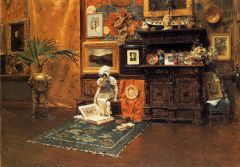
|
William Merritt Chase
In the Studio ca. 1880 American Impressionism -This is Chase's 10th St studio -Shows that Chase is quite the collector -One of the images is Frans Hals's Witch of Haarlem from 1630. |
|
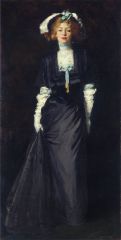
|
Robert Henri
Jessica Penn with White Plume 1909 Ash Can School -This painting features Jessica Penn, a woman who grew up poor and became an artist’s nude model. -She is not the ideal early twentieth century woman, but Robert Henri shows her as proud and intelligent. A different painter might have emphasized her struggles in life and made her look haggard and immoral, unappealing and unrelatable. -This piece is owned by Crystal Bridges Museum of American Art, a museum developed by Walton Family Foundation (Walmart). |
|
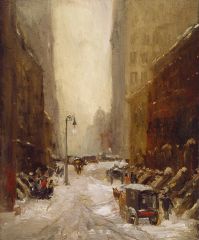
|
Robert Henri
Snow in New York 1902 Ash Can School -This piece is entirely reflective of the ideals of the Ash Can movement, the commitment of capturing the gritty and modern side of the city. -The snow is dirty, and the piece consists of mostly browns. It highlights the pollution of the city. |
|
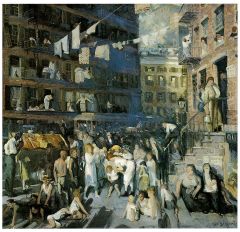
|
George Wesley Bellows
Cliff Dwellers 1913 Ash Can School -George Bellows captures Ash Can ideals with a colorful crowd on New York City’s Lower East Side. It appears to be a hot summer day. People spill out of tenement buildings onto the streets, stoops, and fire escapes. Laundry flaps overhead and a street vendor hawks his goods from his pushcart in the midst of all the traffic. In the background, a trolley car heads toward Vesey Street. -Bellows exhibited the work in the 1913 Armory Show, which he helped organize. |
|
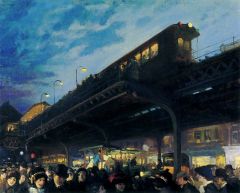
|
John Sloan
6 O'clock, Winter 1912 Ash Can School -The Third Avenue "El" (short for "elevated train") at the peak of the evening rush hour–reflects Sloan's ability to catch the drama in everyday scenes. -The train itself, the electric light, and the masses on various groups of people reflect the Ash Can ideals capturing the modernity of city life. |
|
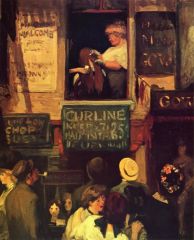
|
John Sloan
The Hairdresser's Window 1907 Ash Can School -Sloan is able to capture the modernity of this city through several pieces of the work: The novelty of hair coloring, signs for restaurant offering cuisine from all over the world. -Sloan noted that he saw this scene while walking to Robert Henri's studio at Fortieth Street and Lexington Avenue. |
|
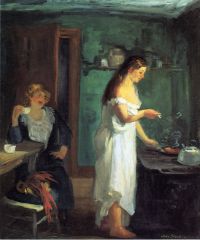
|
John Sloan
Three A.M. 1909 Ash Can School -His scene of underdressed working-class women shocked contemporary audiences, and the painting was rejected by exhibition juries. -He found this scene by looking into peoples windows in neighboring buildings. |
|
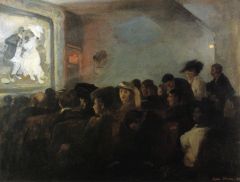
|
John Sloan
Movie, Five Cents 1907 Ash Can School |
|
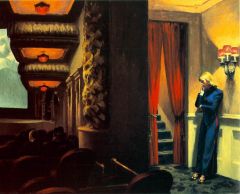
|
Edward Hopper
New York Movie 1939 Ash Can School / American Impressionism |
|
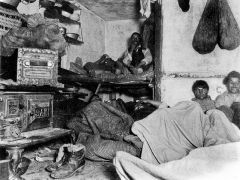
|
Jacob Riis
Five Cents Lodging, Bayard Street ca, 1889 |
|
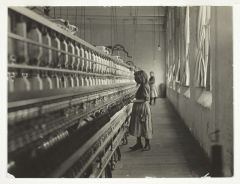
|
Lewis Hine
Child in Carolina Cotton Mill 1908 |

